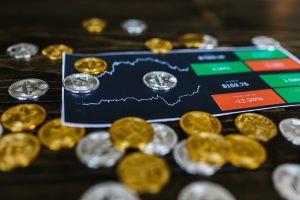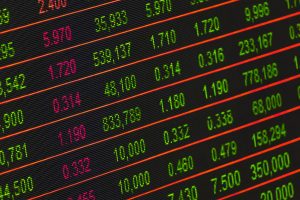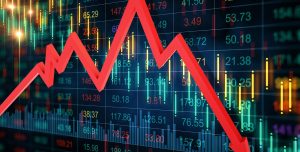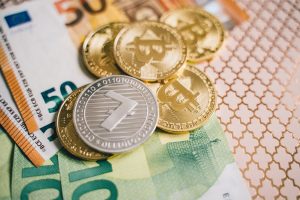Forex trading is also known as foreign exchange trading. It is a global marketplace that involves the buying and selling of currencies. With the aim to profit from changes in exchange rates, Forex traders trade currencies in pairs on one of the biggest and most liquid financial markets. It is important to understand the basic concepts of the market and how it functions in order to fully comprehend how Forex trading works. In this detailed article, we will be discussing how Forex trading works.
The Forex Market
The Forex market is a decentralized market, which means that it is not located in one central location, and it is not controlled by anybody. Instead, it is dispersed all over the world and open twenty-four hours a day, and seven days a week. A network of banks, brokers, retailers, and traders who purchase and sell currencies makes up the market. The purpose of Forex trading is to generate income by buying a currency at a lower price and selling it at a higher price.
The Basics Of Forex Trading
Forex trading involves the conversion of one currency into another at a predetermined exchange rate. Two examples of currencies that are always traded in pairs are EUR/USD (Euro/US Dollar) and USD/JPY (US Dollar/Japanese Yen). There is a base currency and a quote currency for every currency pair. A unit of the base currency can be purchased with a certain amount of the quote currency, which is represented by the exchange rate.
How Forex Trading Really Works
Forex trading involves buying and selling currencies with the intention of generating a profit. If traders think the value of the base currency will rise relative to the quote currency, they can buy a currency pair. If they decide to pursue a different course of action and think the value of the base currency is going to fall compared to the quote currency, they can sell a currency pair.
The first step in trading forex is to open an account with a forex broker. The trader will receive a trading platform from the broker, which is a software application that enables access to the forex market. The trading platform will offer the trader the opportunity to place trades as well as real-time quotes, charts, and news feeds.
Traders have the option of placing different types of orders, including market orders, limit orders, and stop-loss orders. A market order is an order to buy or sell a currency pair at the current market price. A stop-loss order forces the automatic sale of a currency pair if it reaches a set price, whereas a limit order directs the purchase or sale of a currency pair at a specific price.
Currencies
Currencies are traded in pairs, with the value of one currency being compared to another. The U.S. dollar and the euro, the U.S. dollar and the Japanese yen, and the U.S. dollar and the British pound are the three most frequently traded currency pairs. A three-letter code is used to identify each currency in a pair, with the first two letters representing the nation and the third letter representing the currency.
The U.S. dollar and the euro, for instance, are represented by the code USD/EUR. The base currency in this pair is the US dollar, while the quote currency is the euro. The exchange rate, or the value of one currency concerning another, determines the value of the currency pair.
Exchange Rate Movements
Exchange rates are influenced by a number of factors such as economic statistics, geopolitical developments, interest rates, and market mood. Exchange prices fluctuate due to the demand and supply dynamics of various currencies on the Forex market.
- Market Analysis
A successful Forex trading requires a deep understanding of market analysis and the implementation of effective trading strategies.
- Fundamental Analysis
In order to predict currency changes, fundamental analysis involves evaluating economic indicators, central bank policies, and geopolitical events. Long-term trends are frequently the focus of traders who use fundamental research.
- Technical Analysis
Traders use technical analysis to study price charts, patterns, and various technical indicators to predict short- to medium-term price movements.
- Sentiment Analysis
Market sentiment is paramount in trading Forex. In order to determine probable price directions, traders evaluate the general attitude and conduct of market participants using this method.
Executing Trades
Forex traders execute trades through brokers, who act as intermediaries between traders and the broader market. Using algorithmic trading systems, these trades can be carried out either automatically or manually. Since the Forex market is global and involves many different time zones, it is open every day of the week, 24 hours a day.
Leverage And Margin
The availability of leverage is one of the unique characteristics of forex trading. By using leverage, traders can manage larger holdings with less capital. Leverage can boost profits, but it also raises the possibility of big losses. Trading on margin involves borrowing money from a broker in order to take on larger positions than the trader’s account balance would permit.
Risk Management
Trading Forex carries a high level of risk, and traders must carefully manage their risk to protect capital and limit losses. One of the ways to manage risk is to use leverage, which is the ability to control a large amount of currency with a small amount of capital. Leverage, though, also raises the possibility of suffering losses. Traders can also use stop-loss orders to automatically close a trade if it reaches a specified loss level.
An effective risk management approach should include diversification, appropriate position sizing, and avoiding overleveraging.
Conclusion
Forex trading is a complex but highly accessible market that offers opportunities for individuals and institutions to participate in global currency exchange. Knowledge of currency pairs, exchange rate movements, trading methods, and risk management principles are necessary to understand how forex trading works.
The dynamic nature of the Forex market offers a platform for a variety of individuals to participate in the exciting field of currency trading, whether they are retail traders looking to profit from short-term price movements or corporate hedging against currency risk.






